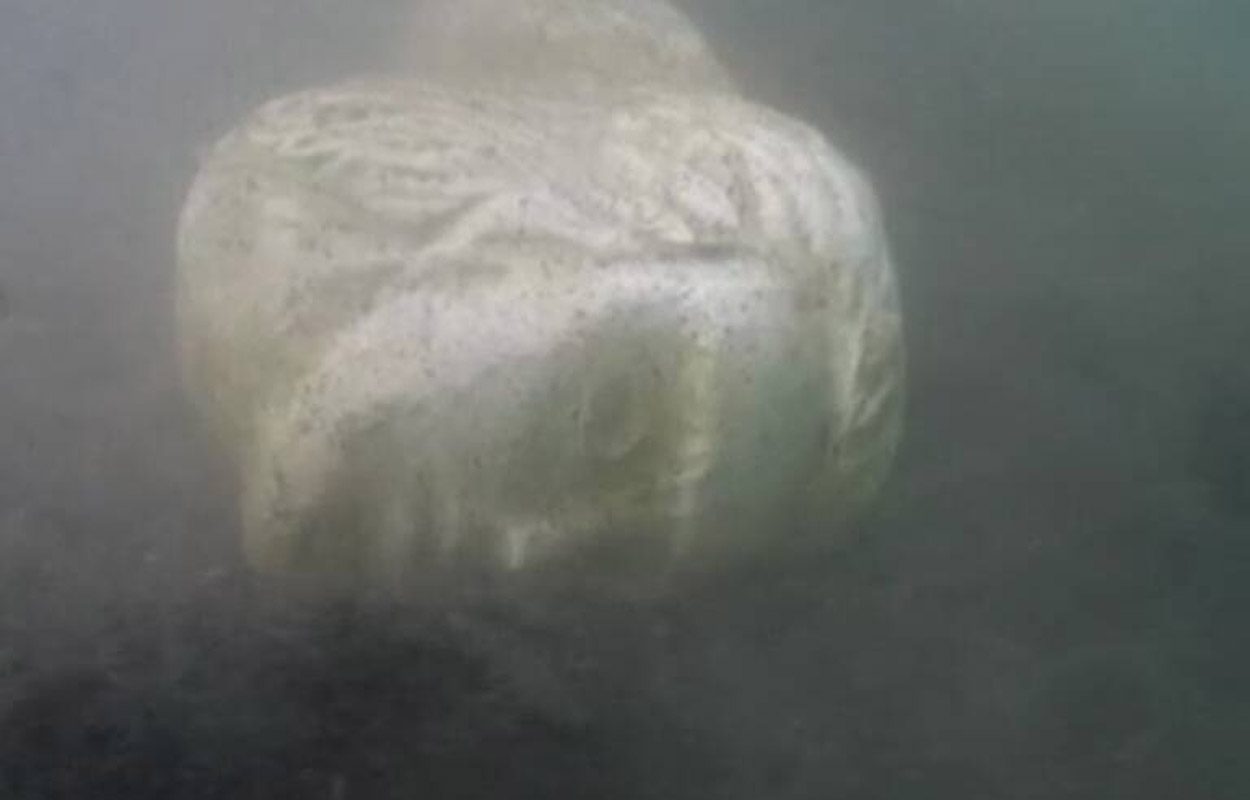A stone head found at the bottom of Lake Nemi in Italy’s Lazio region may be from Caligula’s Nemi ships.
The discovery was made by the Municipal Civil Protection of Nemi during reclamation works to clean the lakebed.
The Nemi ships were two gigantic vessels built in the 1st century AD during the reign of the Roman emperor Caligula on Lake Nemi. Although the purpose of the ships is speculated, it is suggested that they were floating pleasure palaces or had a religious significance as the lake was considered sacred.
Local fishermen had long been aware of the existence of the wrecks, but they were first investigated in 1446 by Cardinal Prospero Colonna and Leon Battista Alberti. The depth of the wrecks at this time made them too deep for salvage (18.3 metres), and attempts at their recovery by Colonna and Alberti led to significant damage to the preserved timber.
In 1927, the Italian dictator Benito Mussolini, ordered that the lake be drained to reveal the wrecks, however, mud eruptions and subsidence in the lake floor meant that they weren’t fully recovered until 1932.
The first ship recovered, named Prima nave, was 70 metres in length with a beam (width) of 20 metres. The second ship, named Seconda nave, measured 73 metres in length with a beam of 24 metres. Both ships were protected by paint and tarred wool on the topside timbers, and were decorated with marble, mosaics, and gilded copper roof tiles.
In an account by the Roman historian, Suetonius, he describes the ships as having “…ten banks of oars…the poops of which blazed with jewels…they were filled with ample baths, galleries and saloons, and supplied with a great variety of vines and fruit trees.”
In 1944 during WW2, the museum where the ships were being stored was struck by allied shelling aiming at an adjacent German artillery post. The museum and Nemi Ships were engulfed in flames and destroyed, with only the bronzes, a few charred timbers, and some materials stored in Rome having survived the fire.
Investigations of the stone head are in their early days, but it has been suggested that it dates from the 1st century AD around the time of Caligula’s reign. According to a report in El Debate, the Nemi City Council stated: “We have notified the competent bodies to make the appropriate assessments and see if it is an original piece.”

Header Image Credit : CASTELLI NOTIZIE





